Interstice.pool
1m*1m, December 2023
Real-time code computation, white sand dunes with semi-transparent veils
Click here to javaScript code
"Interstice.pool" is an immersive computational art immersive projection, featuring a group of triangular code creatures that exhibit a series of self-organizing behaviors and temporal evolution on a 1m by 1m white sand terrain. These digital entities inhabit a sea of pixels, a discovered liminal space, displaying distinctly different collective behaviors throughout the day—smaller, faster, and more dispersed in the morning; larger, slower, and prone to clustering by evening.
The work is presented on a pure white square space, its sides equal to a standard unit in any space, like 1m*1m. In the artist Huichuan's practice, this is described as a pixel, representing a realm of pure, clean potential that can be infinitely spliced and extended.
Technical Implementation
I began delving deeply into computer graphics algorithms, such as GLSL, and was profoundly impressed by their excellent performance, visuals, and versatile applicability. I integrated them with p5.js, and attempted to apply these to the particle system of the 'vehicles' and 'boids' I had previously created.
Now, they appear like a array of fish swimming in the water. However, I do not want it to just be a simulation of a fish tank or boids, so I am exploring how these creatures should evolve next. I might move away from using particle systems and instead study pixel-by-pixel computation algorithms like the Game of Life and reaction-diffusion, but this is still a work in progress.
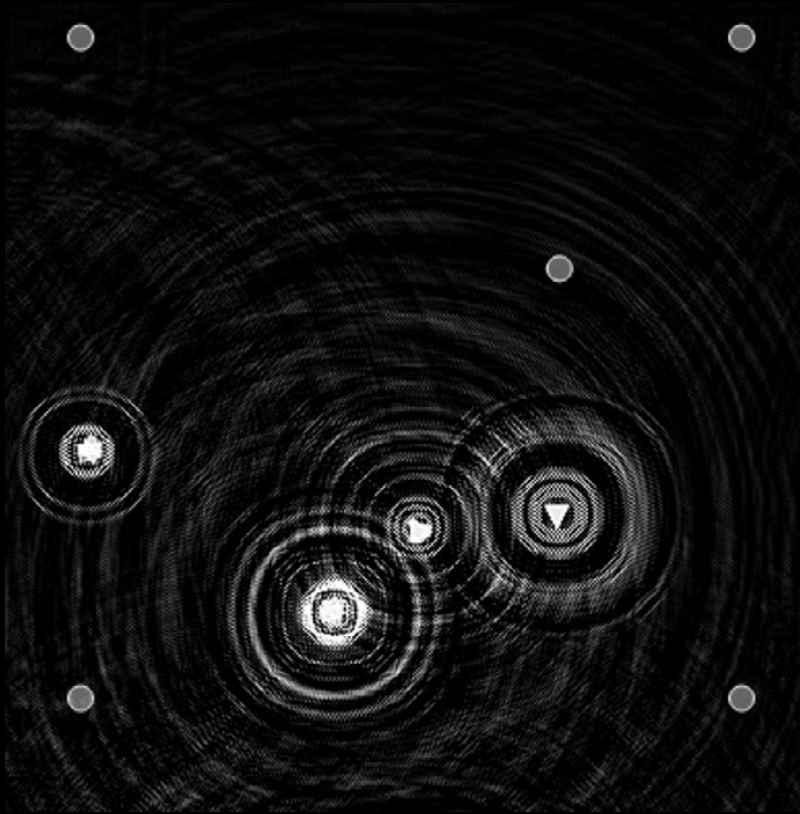
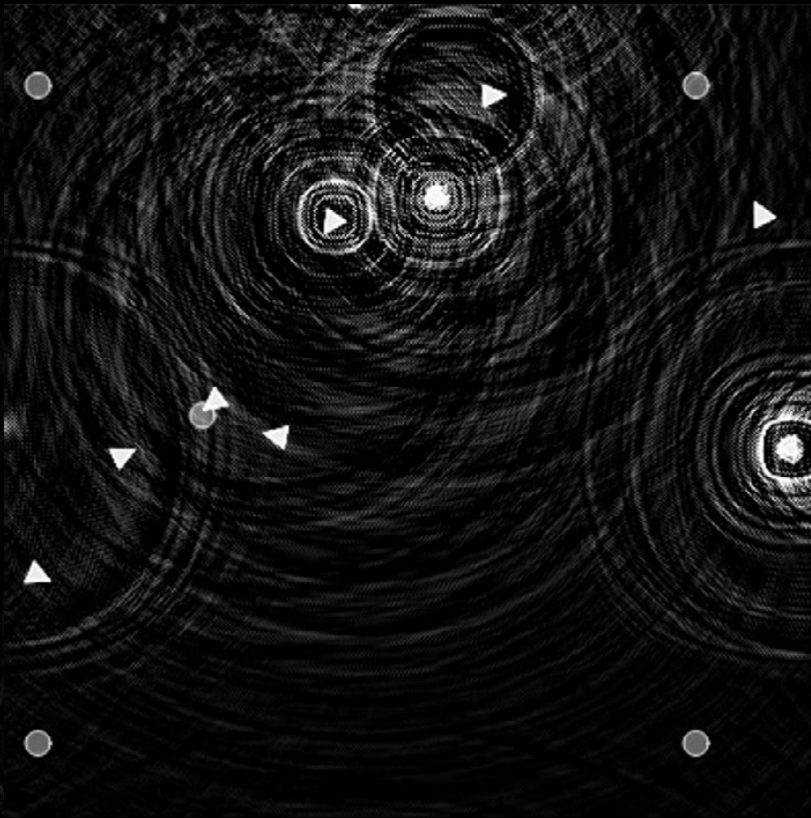
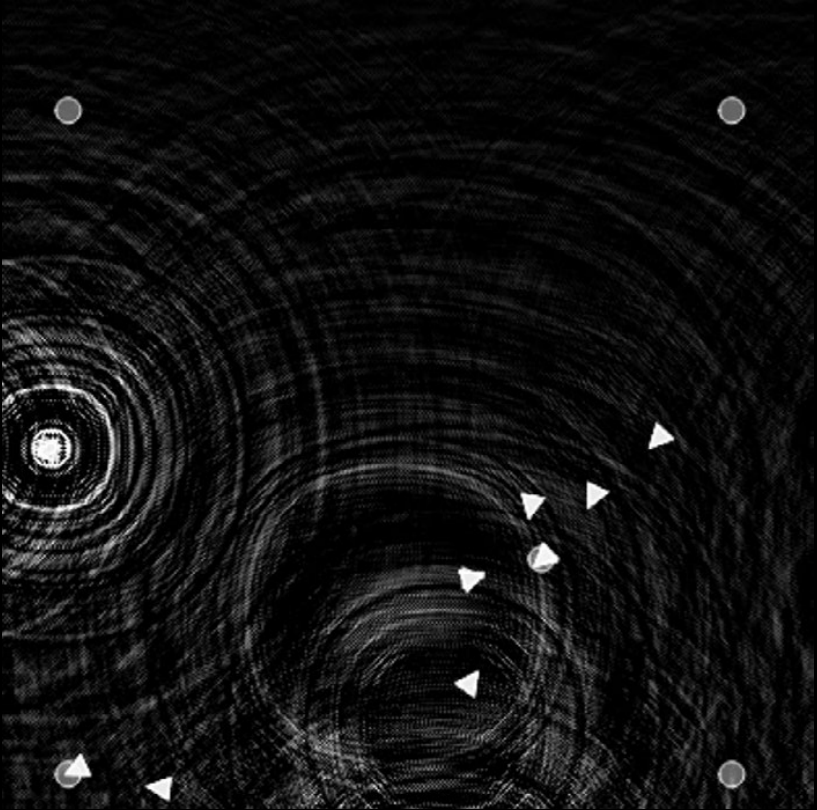
When no target nearby, they spins, disturbing water ripples.
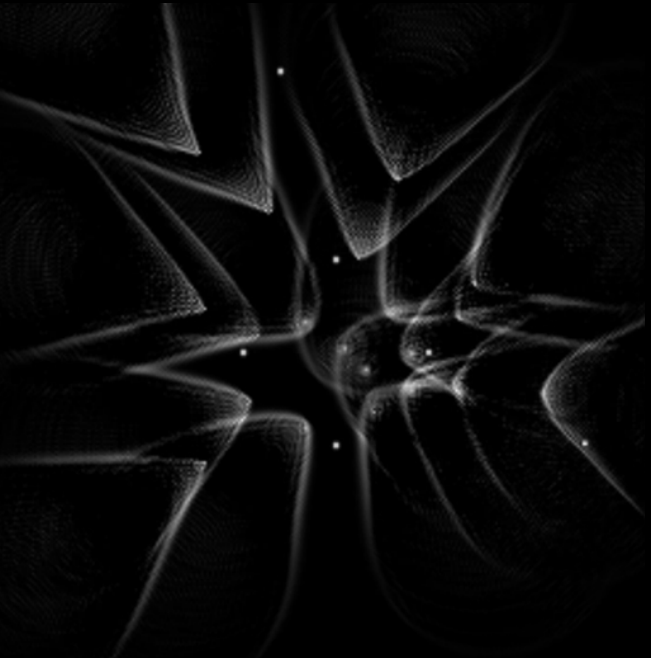
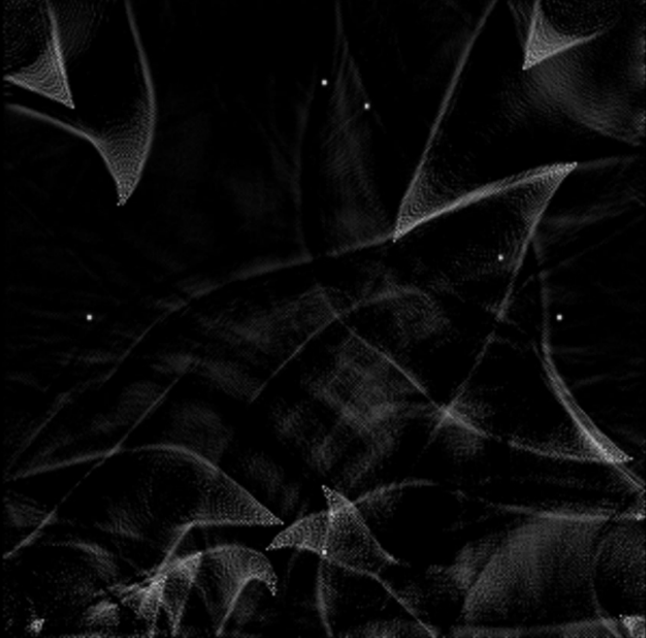
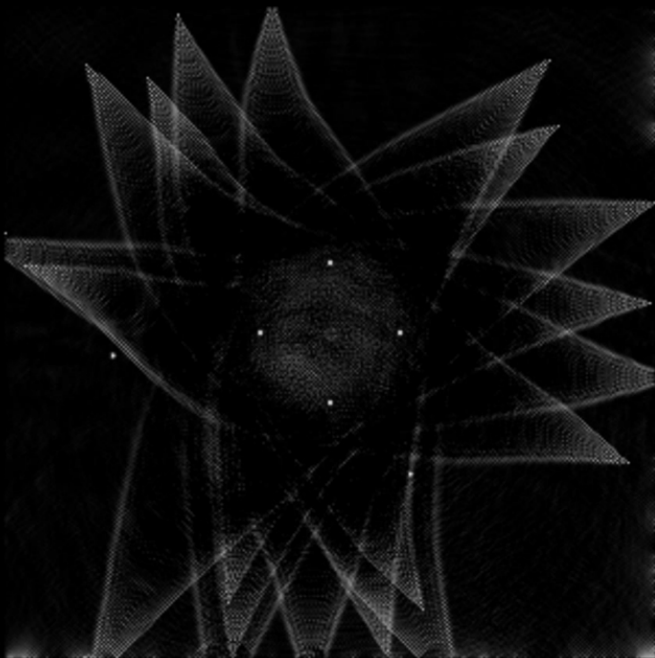
No creatures shape appear, but disturbing ripples all the time
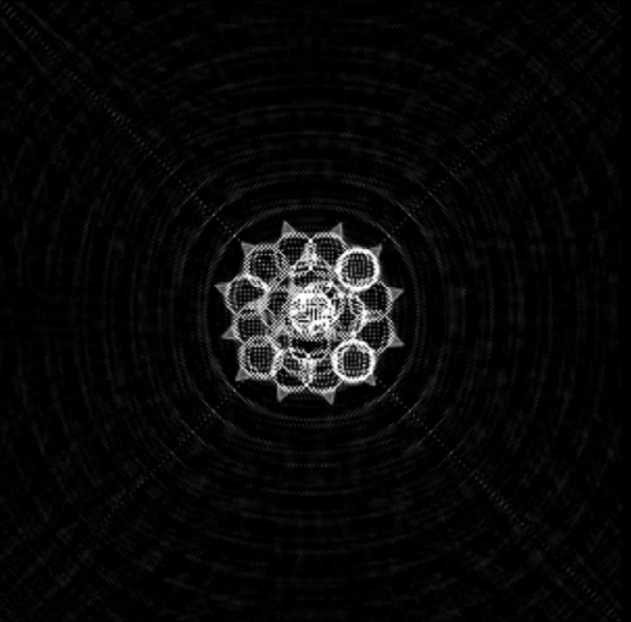
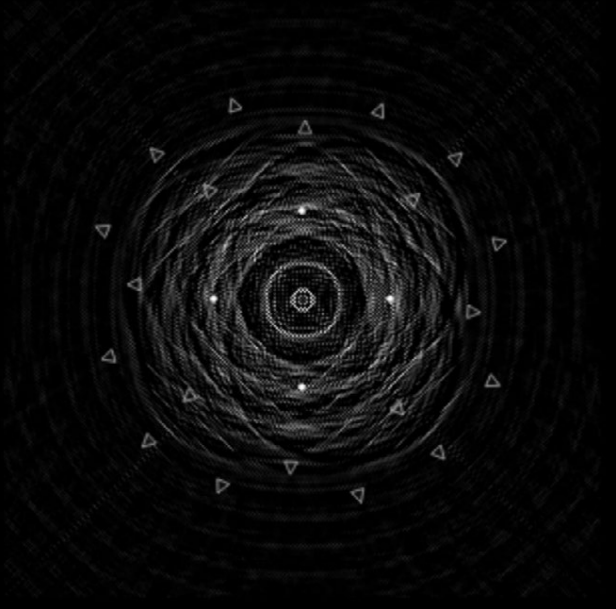
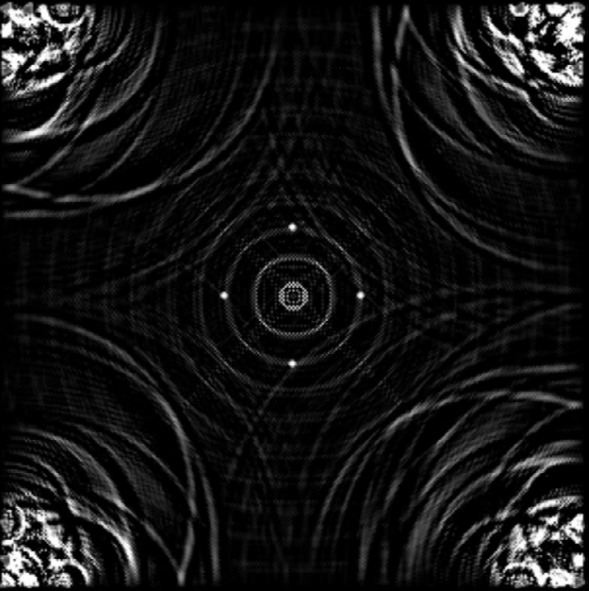
A symmetrical rhythm, by changing the movement of targets
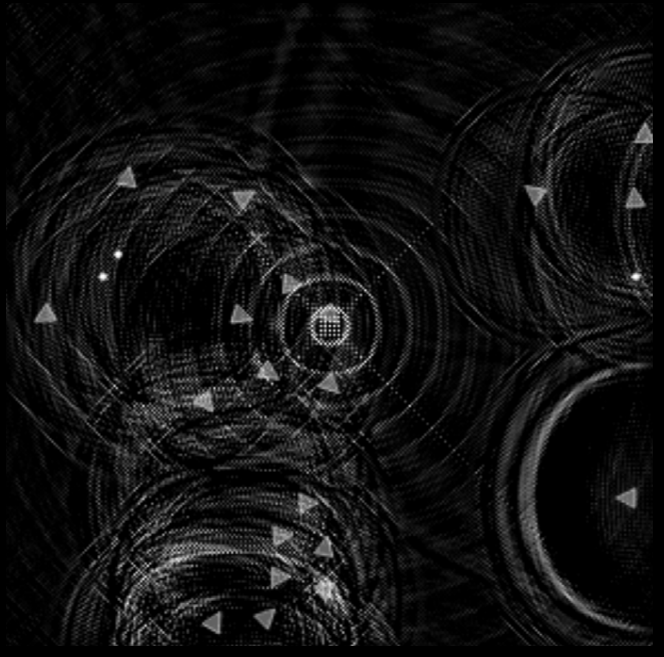
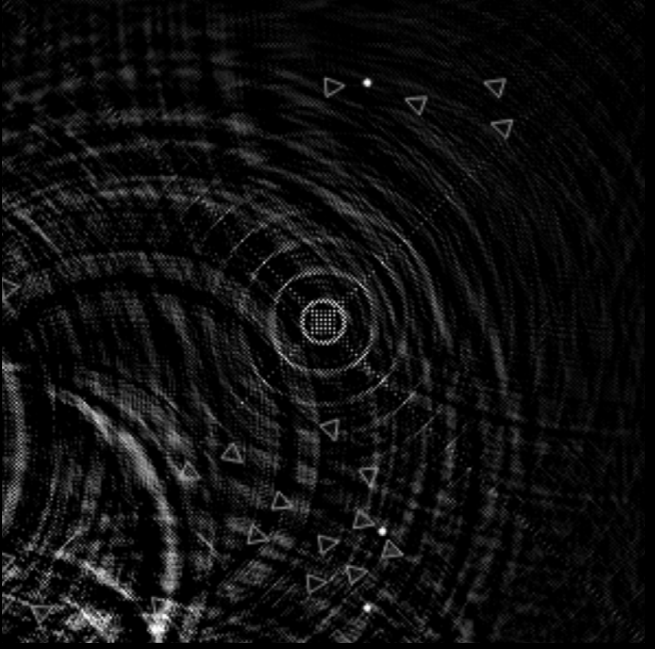
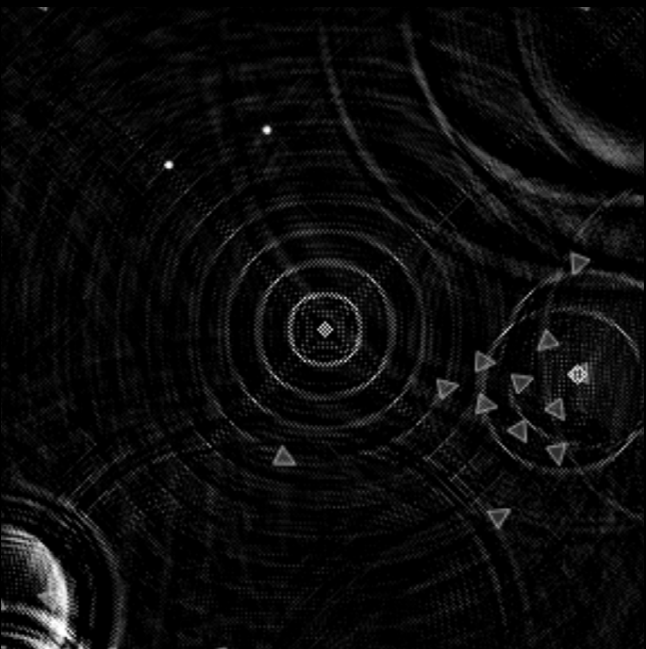
Final version, chaos
Installing: Sand and Fabrics projection experiments
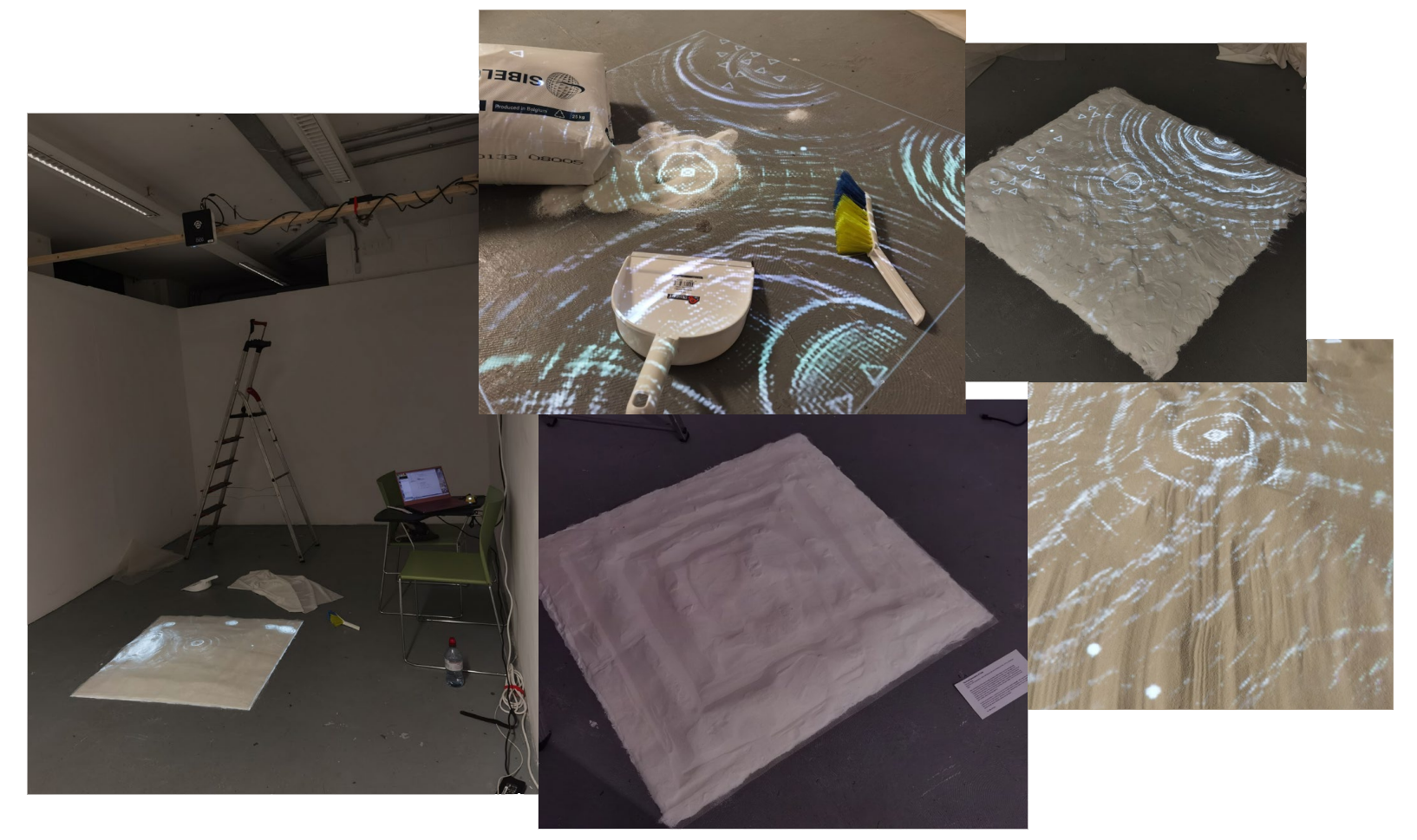
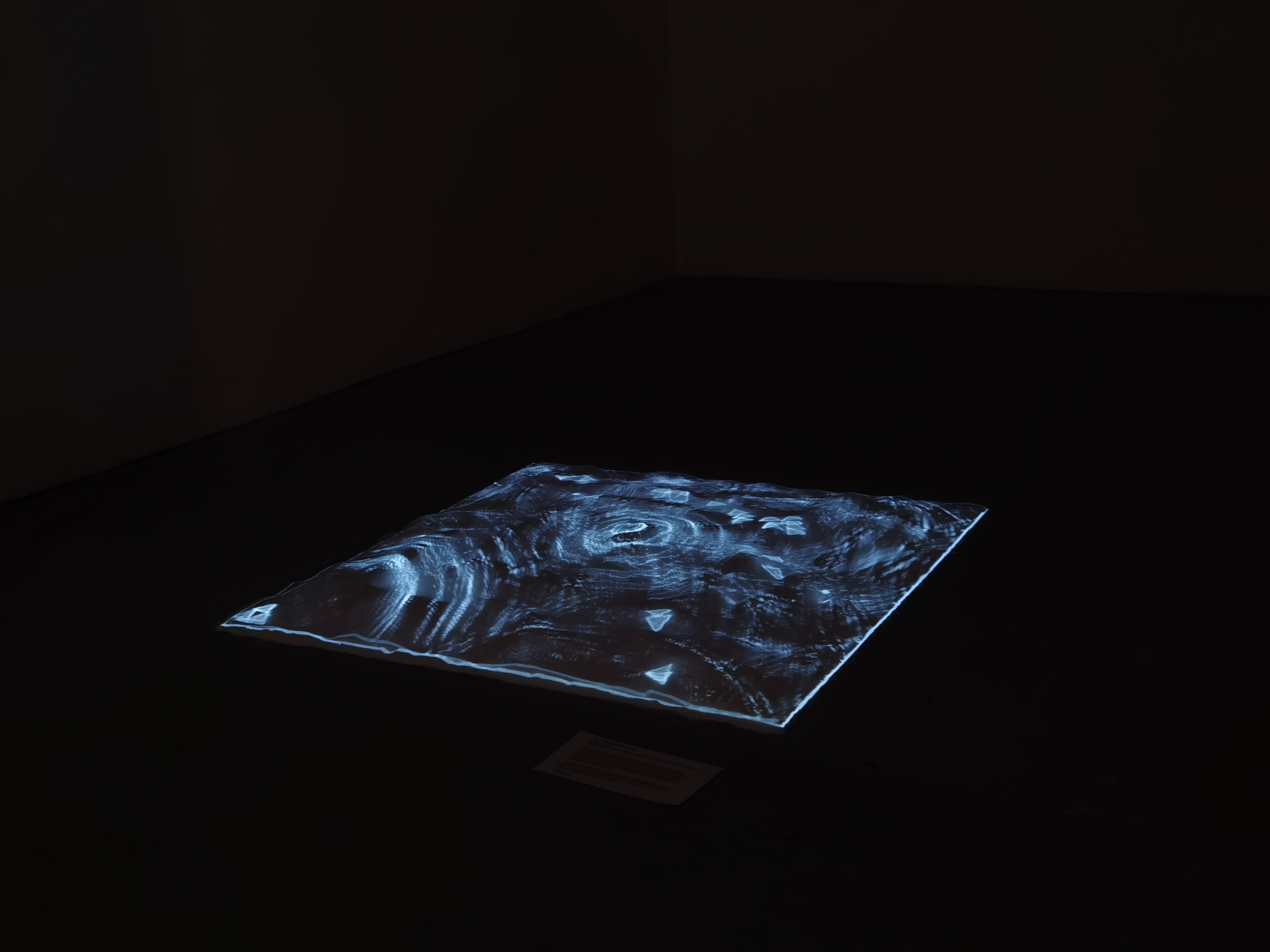
References
Natureofcode.com. (2009). The Nature of Code. [online] Available at:
https://natureofcode.com/book/chapter-9-the-evolution-of-code/.
www.youtube.com. (n.d.). Coding Water Ripples with Shaders and
p5.js #TeamSeas. [online] Available at: https://www.youtube.com/
live/5lIl5F1hpTE?si=0R-mEj4PZSrq1NTl [Accessed 11 Dec. 2023].
www.youtube.com. (2023). How One Programmer Created Gaming’s Most Complex
Ecosystem. [online] Available at: https://www.youtube.com/watch?v=6Ji2q3WQE7
8&list=LL&index=3 [Accessed 13 Nov. 2023].
The Book of Shaders. (2015). The Book of Shaders. [online] Available at:
https://thebookofshaders.com/.
Miller, D.R. (2022). biosim4. [online] GitHub. Available at: https://github.
com/davidrmiller/biosim4.